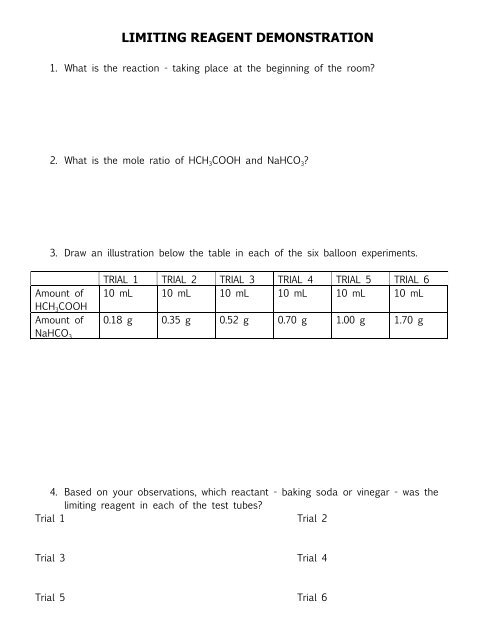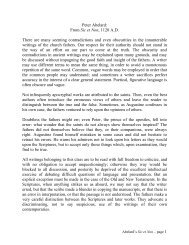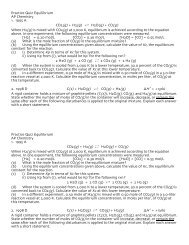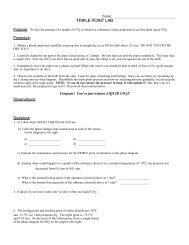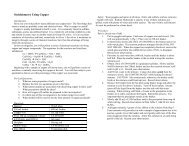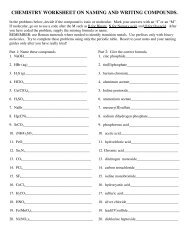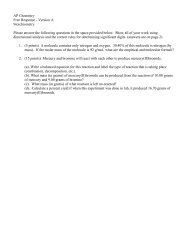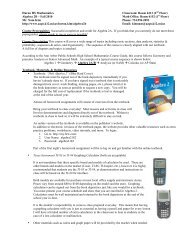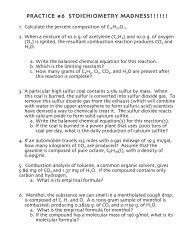LIMITING REAGENT DEMONSTRATION
LIMITING REAGENT DEMONSTRATION
LIMITING REAGENT DEMONSTRATION
You also want an ePaper? Increase the reach of your titles
YUMPU automatically turns print PDFs into web optimized ePapers that Google loves.
<strong>LIMITING</strong> <strong>REAGENT</strong> <strong>DEMONSTRATION</strong><br />
1. What is the reaction - taking place at the beginning of the room<br />
2. What is the mole ratio of HCH 3 COOH and NaHCO 3 <br />
3. Draw an illustration below the table in each of the six balloon experiments.<br />
Amount of<br />
HCH 3 COOH<br />
Amount of<br />
NaHCO 3<br />
TRIAL 1 TRIAL 2 TRIAL 3 TRIAL 4 TRIAL 5 TRIAL 6<br />
10 mL 10 mL 10 mL 10 mL 10 mL 10 mL<br />
0.18 g 0.35 g 0.52 g 0.70 g 1.00 g 1.70 g<br />
4. Based on your observations, which reactant - baking soda or vinegar - was the<br />
limiting reagent in each of the test tubes<br />
Trial 1 Trial 2<br />
Trial 3 Trial 4<br />
Trial 5 Trial 6
CALCULATIONS<br />
5. Household vinegar is 5% acetic acid by volume (MM = 60.06 g/mol). Let’s assume<br />
that the density of vinegar is 1.00 g/mL (it’s close). How many moles of acetic<br />
acid are contained in 10 mL of household vinegar. SHOW WORK. PRACTICE<br />
DIMENSIONAL ANALYSIS!<br />
6. Find the number of moles of NaHCO 3 (MM = 84.01 g/mol) contained in each of<br />
the balloons. SHOW WORK. PRACTICE DIMENSIONAL ANALYSIS!<br />
7. Consider your values in the calculations above and compare these to the<br />
observations you made accompanying the demo. Do your calculations explain your<br />
observations EXPLAIN!


